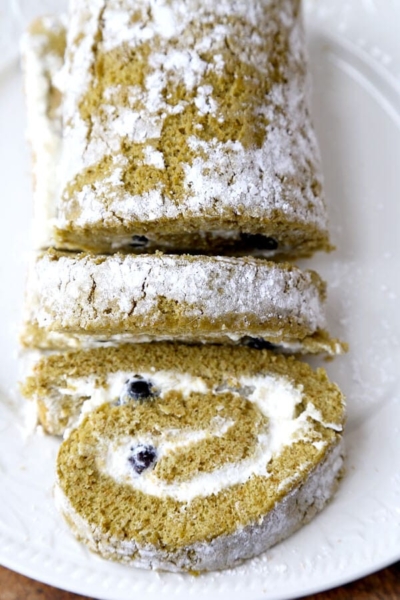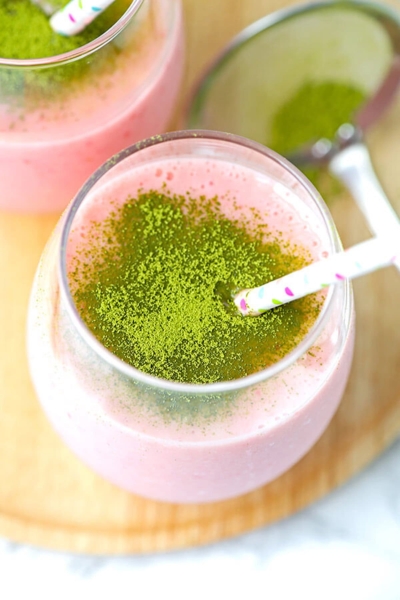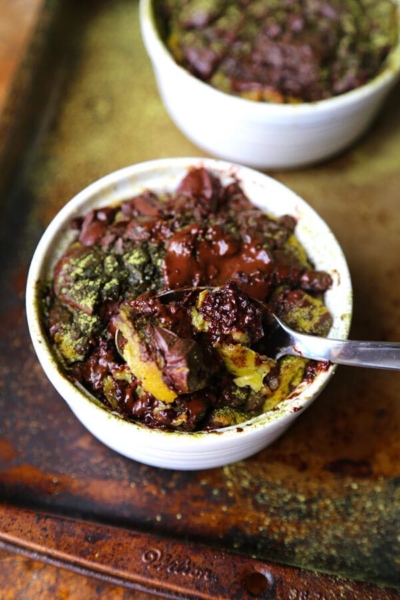Delicately sweet and chewy like rice cakes on the inside, these matcha mochi cookies are easy to make and very hard to resist!
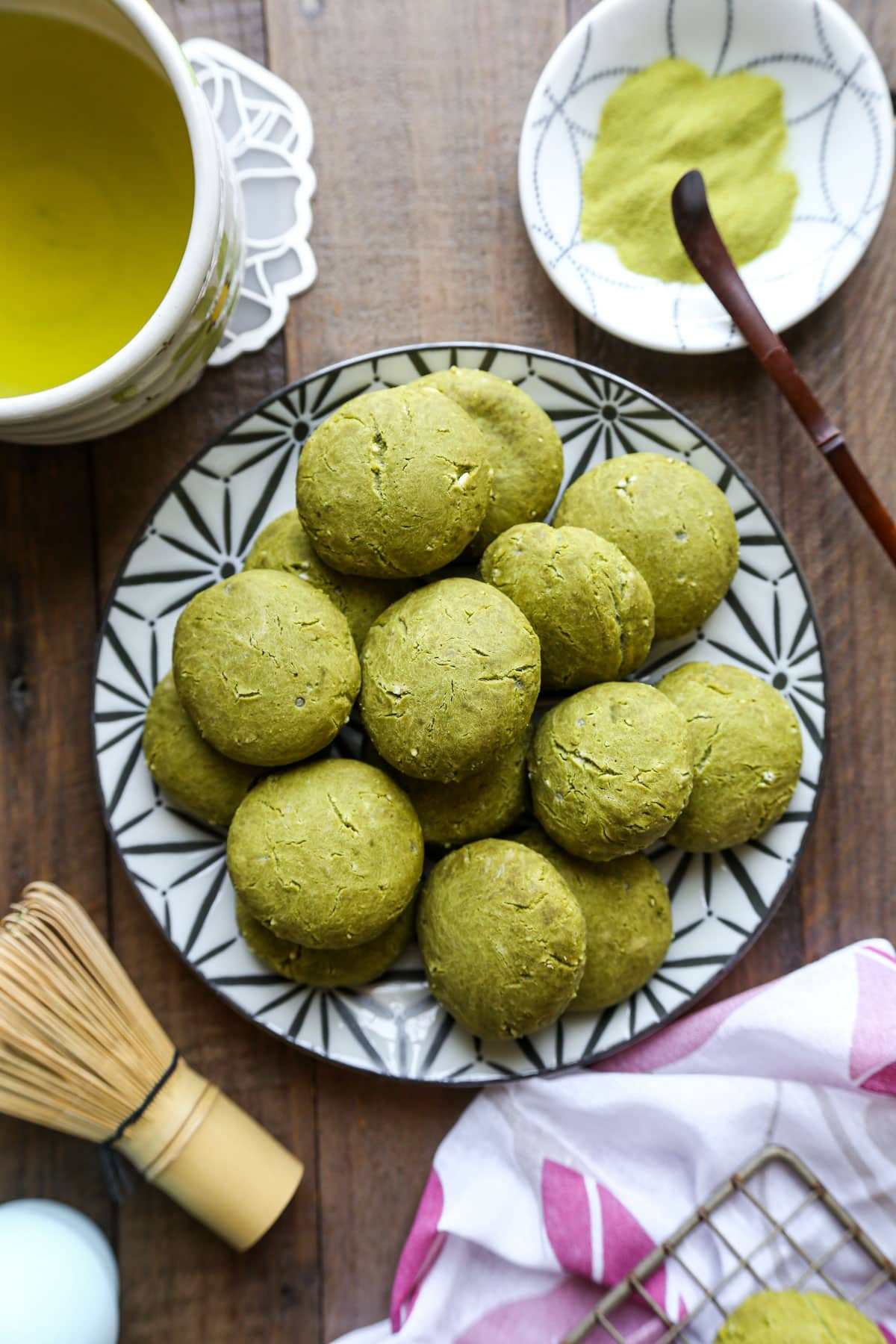
Table of contents
What are Matcha Mochi Cookies?
These delicious cookies are made with two types of rice flour which give them a crisp exterior and the soft, chewy, stretchy interior texture of mochi (my fave!) – and are flavored with Japanese green tea.
What is Matcha?
Matcha is specially grown, cultivated and processed green tea leaves that are ground into a fine powder. First harvest matcha has a bright green color – and a subtle nutty, almost grassy flavor which is complimented by natural sweetness around the edges.
There are two main types of matcha.
- Ceremonial Grade Matcha: This is shade grown, first harvest matcha comprised of tender, young green tea leaves. This is typically considered pure green tea. It is the tea you’d drink on its own – or use in matcha lattes.
- Culinary Grade Matcha: This is simply a grade of matcha used for baking and cooking. When using this grade, I try to find premium culinary grade matcha for the best flavor.
Matcha is considered a superfood – and is loaded with antioxidants. Learn more about matcha in this post.

Matcha Cookies Ingredients
- Silken Tofu: This is the softest of all types of tofu and mashes easily. Incidentally, silken tofu is also the main source of moisture in these Japanese green tea cookies, aside from water.
- Shiratamako Flour This is glutinous rice flour. It’s made from mochigome (AKA: glutinous short grain Japanese rice). This flour gives mochi it’s trademark chewy texture. You’ll also use shiratamako flour in Japanese desserts like mitarashi dango.
- Joshinko Flour: This rice flour is made from uruchimai rice (this is the short grain Japanese rice most commonly served with meals). It’s chewy, but less sticky than mochigome. I find that using a combination of these two rice flours gives these matcha cookies the perfect texture. Grab joshinko flour on Amazon.
- Matcha Powder: This green tea powder introduces a natural nutty, grassy sweetness which gives the cookies an overall complex flavor profile. Use premium grade matcha powder if you can!
- Sugar: Feel free to use brown sugar or granulated sugar. Just keep in mind: if you’re making truly vegan matcha cookies, you’ll want to avoid using granulated sugar as bone char is used in the refining process.
- Salt: A pinch of salt is a common cookie ingredient. It balances out the sweetness. Use kosher salt if you have it handy – as table salt can actually be a little too salty.
- Vegetable Oil: Use a neutral oil – like vegetable oil or grapeseed oil. Unfortunately olive oil has too much natural flavor and using it will detract from the subtle perfection the sugar and matcha powder deliver.
- Water: You only need 1/4 cup of H2O to make this matcha cookie recipe.
It may seem strange to make cookies without typical ingredients like all purpose flour, baking powder, egg yolks, butter, baking soda and vanilla extract. But trust me, this recipe works!
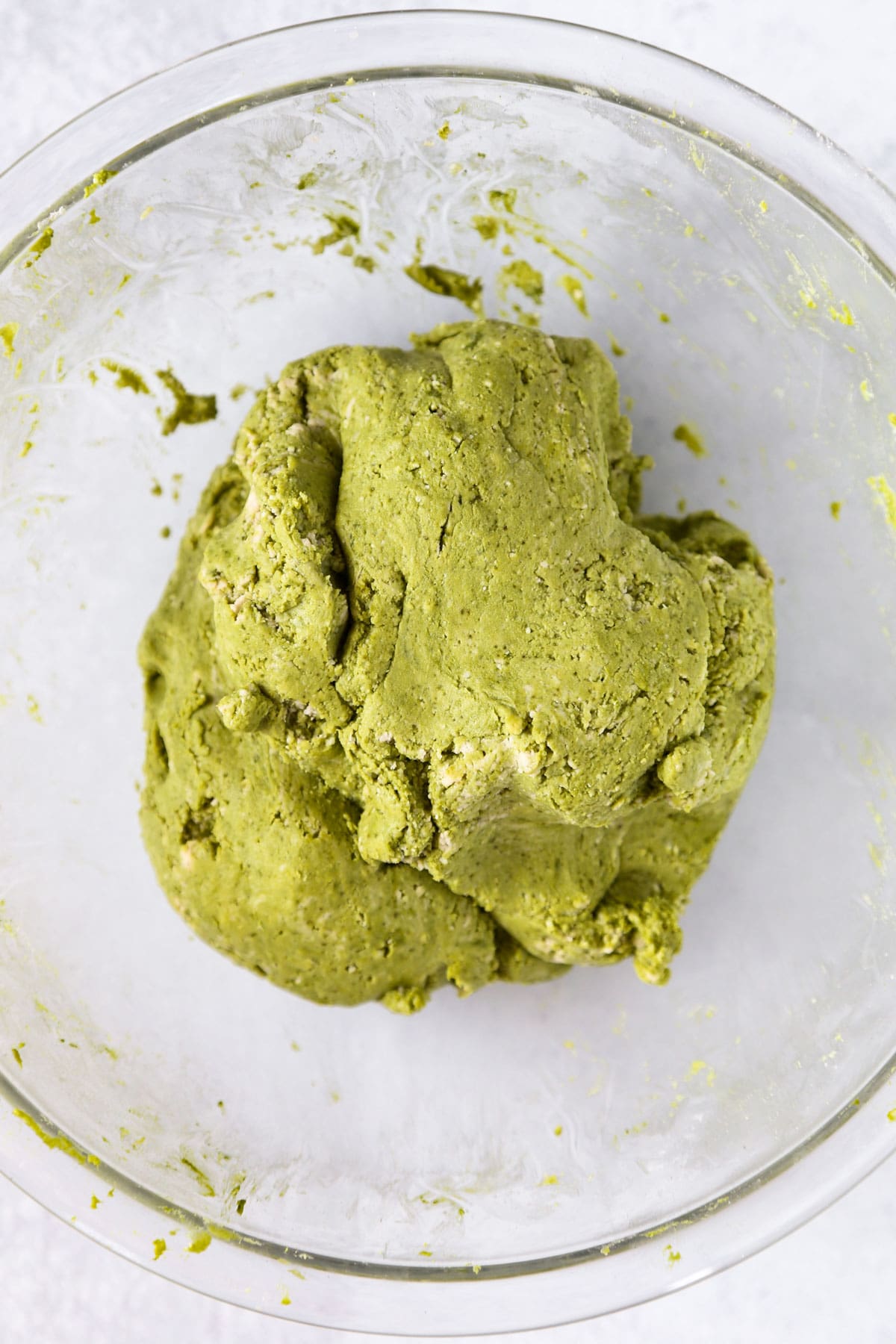
How to Make Matcha Cookies (Instructions)
- Gather all of your cooking tools and ingredients.
- Preheat your oven to 350°F – and arrange it so one of your oven racks sits in the middle.
- Line a baking sheet with parchment paper or non-stick foil and set it aside.
- Then mash your silken tofu in a bowl and set that aside as well.
- Next, place the shiratamako and joshinko flour in a large mixing bowl. Stir in the matcha powder, sugar and salt.
- Add the mashed tofu, oil and water into the bowl with your dry ingredients – and stir until everything is well combined.
- Use your hands to kneed the dough for a few minutes until it softens. You’re looking for the typical consistency of cookie dough here.
- Then scoop out about 2 tablespoons of the dough and roll it into a ball. Shape that cookie dough ball into a thick, round cookie about 2 /12 inches in diameter (no need to go super flat here!) and place it on your baking sheet. Repeat this step until all of the dough has been used.
- Bake the green tea cookies in the middle rack of your oven for 27 to 30 minutes – until the top is dry and a little crispy, and the bottom of the cookies is a medium brown. Then turn your oven off and leave the cookies inside for an additional 5 minutes so the exterior crisps up a bit more.
- Finally, transfer the cookies to a cooling rack for 20 to 30 minutes, or until they reach room temperature. Serve and enjoy!
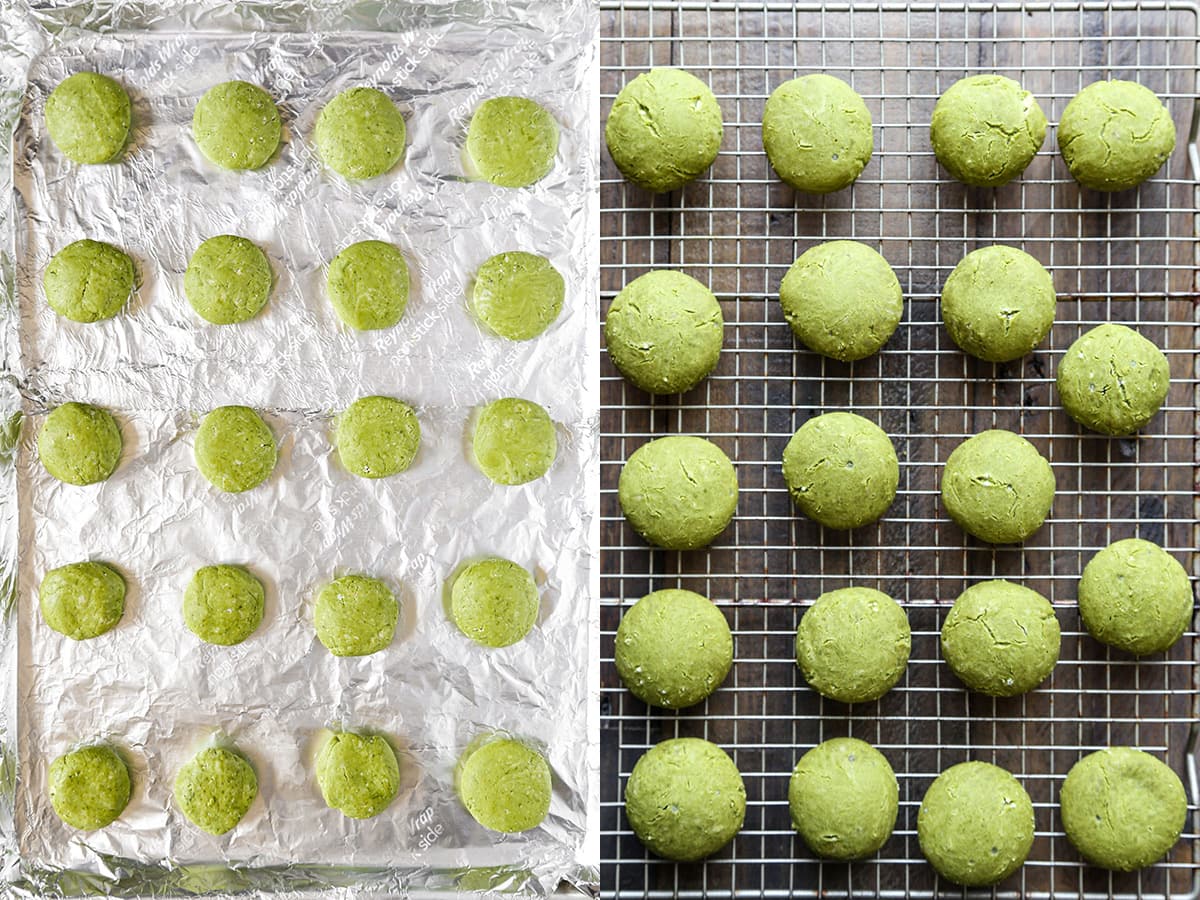
Flavor and Texture
The taste is delicately sweet and nutty. There’s a hint of vegetal grassiness from the matcha powder. This matcha cookies recipe is the prime example of a dessert that isn’t cloyingly sweet, but still scratches the itch we feel for a sweet treat after a meal.
But the texture is just as much of a draw as the flavor.
- The exterior is crisp – quickly giving way to a soft, chewy and somewhat elastic interior.
- It’s a similar interplay of textures you might get from a good French macaron, but slightly more exaggerated.
And Check Out These Other Delicious and Easy Matcha Recipes
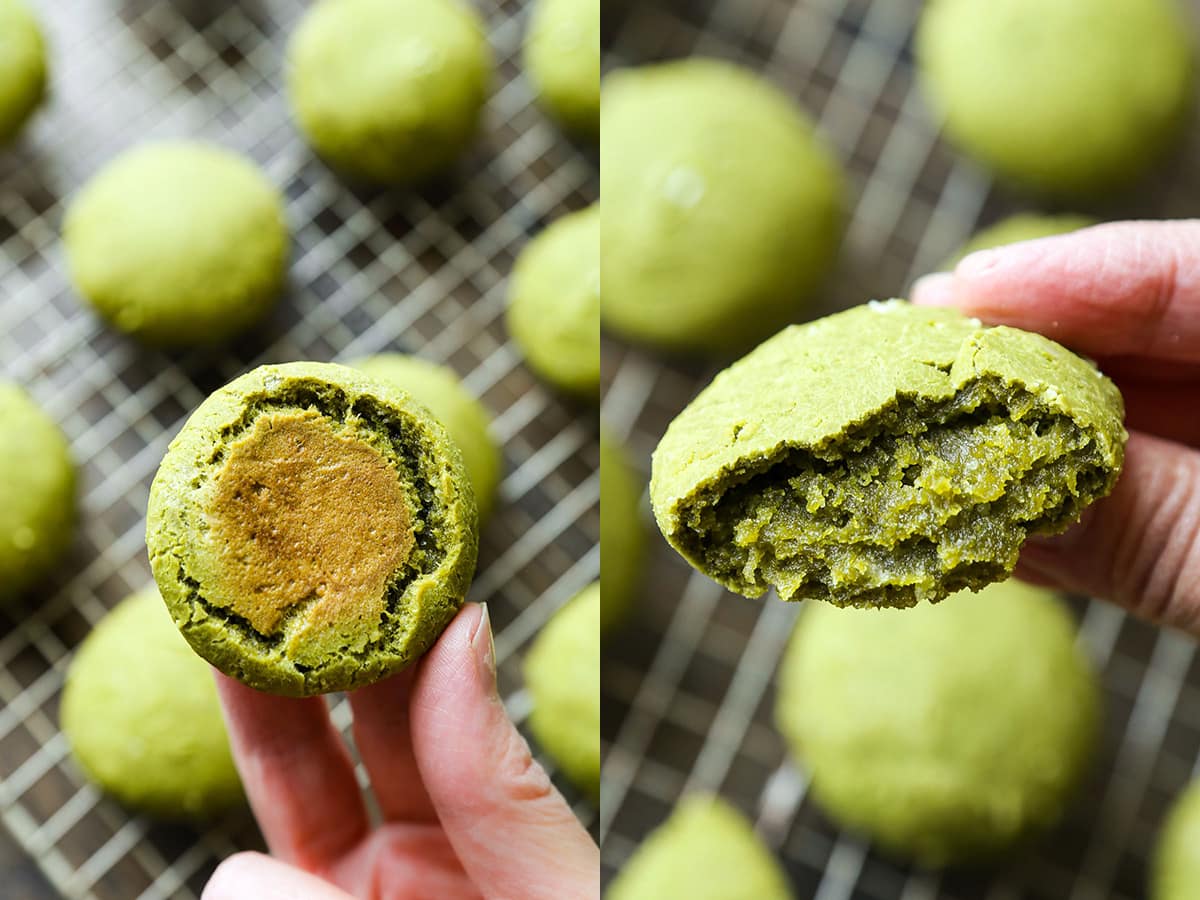
Where to Buy Matcha
Japanese matcha has become much easier to find in the West recent years. You can easily track it down at many Asian grocery stores, shops like Whole Foods and Wegmens and on Amazon.
Or you can order some of the really good stuff from tea specialty shops like the folks at Tea Master in LA. Most of the matcha they carry is cultivated in Yame, Japan (which is incidentally where my mom comes from).
But wherever you do your shopping, grab first harvest premium or ceremonial grade matcha if you can! You’ll taste the difference.
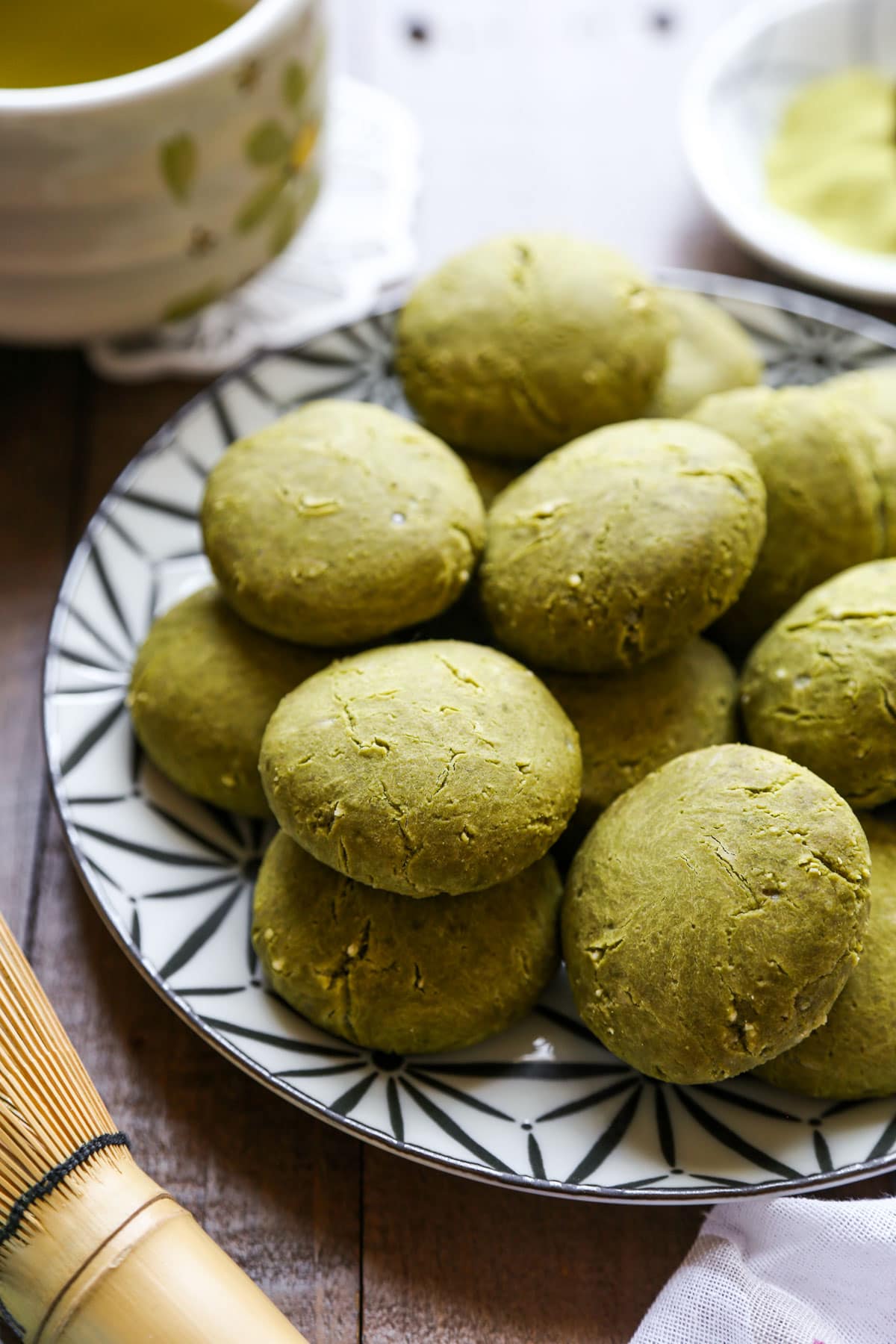
How to Store Leftover Cookies
These cookies taste best on the day of baking. Store any leftover cookies inside an airtight container or food storage bag for up to 2 to 3 days max. But don’t be surprised if you eat the entire batch long before then!
Lining up the leftover cookies between layers of parchment paper will keep them from sticking together.

Have you tried this chewy matcha mochi cookies? Are there changes you made that you would like to share? Share your tips and recommendations in the comments section below!
Print
Matcha Mochi Cookies
- Prep Time: 20 minutes
- Cook Time: 35 minutes
- Total Time: 55 minutes
- Yield: 18 to 22 cookies 1x
- Category: Dessert
- Method: Baking
- Cuisine: Japanese
- Diet: Vegetarian
Description
Delicately sweet and chewy like rice cakes on the inside, these matcha mochi cookies are hard to resist!
Ingredients
- 10 oz silken tofu, drained
- 1 3/4 cup shiratamako flour
- 3/4 cup joshinko flour
- 2 1/2 tablespoons matcha (premium grade, preferably)
- 1 cup brown sugar or granulated sugar
- Pinch of salt
- 6 tablespoons vegetable or grapeseed oil
- 1/4 cup water
Instructions
- Preheat the oven to 350ºF.
- Line a baking sheet with parchment paper or non-stick foil. Set aside.
- Mash the silken tofu in a bowl and set aside.
- Place the shiratamako and joshinko flour in a separate bowl.
- Stir in the matcha powder, sugar, and salt.
- Add the tofu, oil, and water, and stir until the ingredients are combined.
- Using your hands, knead the dough for a few minutes until it becomes softer, like the consistency of cookie dough.
- Scoop about 2 tablespoons of the dough and roll it into a ball. Shape it into a round cookie about 2 1/2 inches in diameter and place it on the baking sheet. Repeat this step until all the dough has been used.
- Bake in the middle rack of the oven for 27 to 30 minutes, until the top is dry and a little crispy, and the bottom part of the cookies is medium brown. Turn the oven off and leave the cookies in the oven for an additional 5 minutes to give them a crispier texture.
- Transfer the cookies to a cooling rack for 20 to 30 minutes, or until they reach room temperature.
Notes
The inside of the cookie should be chewy like mochi.
It’s best to enjoy them the day of as they have the perfect mixture of dry and slightly crispy exterior and chewy interior. The next day they will still be good but will no longer be crispy.
I recommend refrigerating them in an airtight storage container to prevent as little moisture as possible from coming in contact with the cookies.
Nutrition
- Serving Size: 1 cookie
- Calories: 196
- Sugar: 9.8g
- Sodium: 3.8mg
- Fat: 6.5g
- Saturated Fat: 3.4g
- Unsaturated Fat: 0.6g
- Trans Fat: 0g
- Carbohydrates: 22.1g
- Fiber: 0.6g
- Protein: 4.6g
- Cholesterol: 9.4mg

